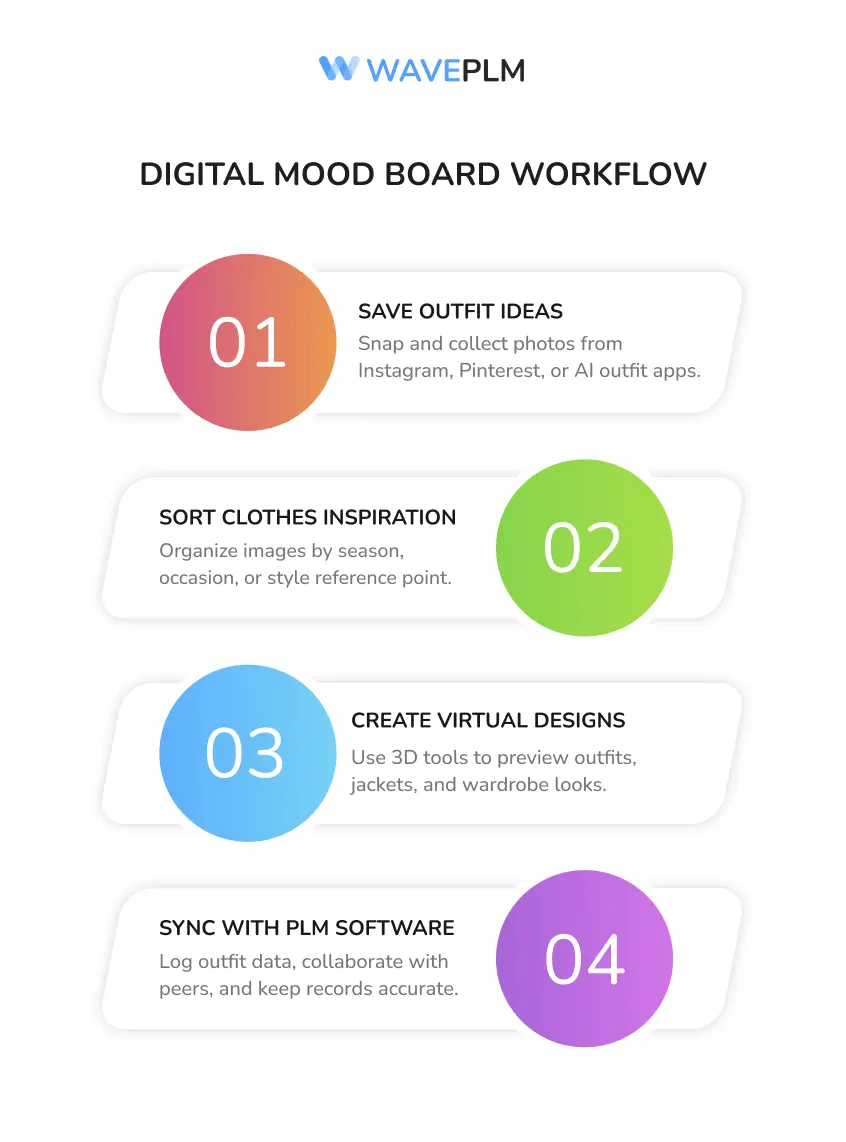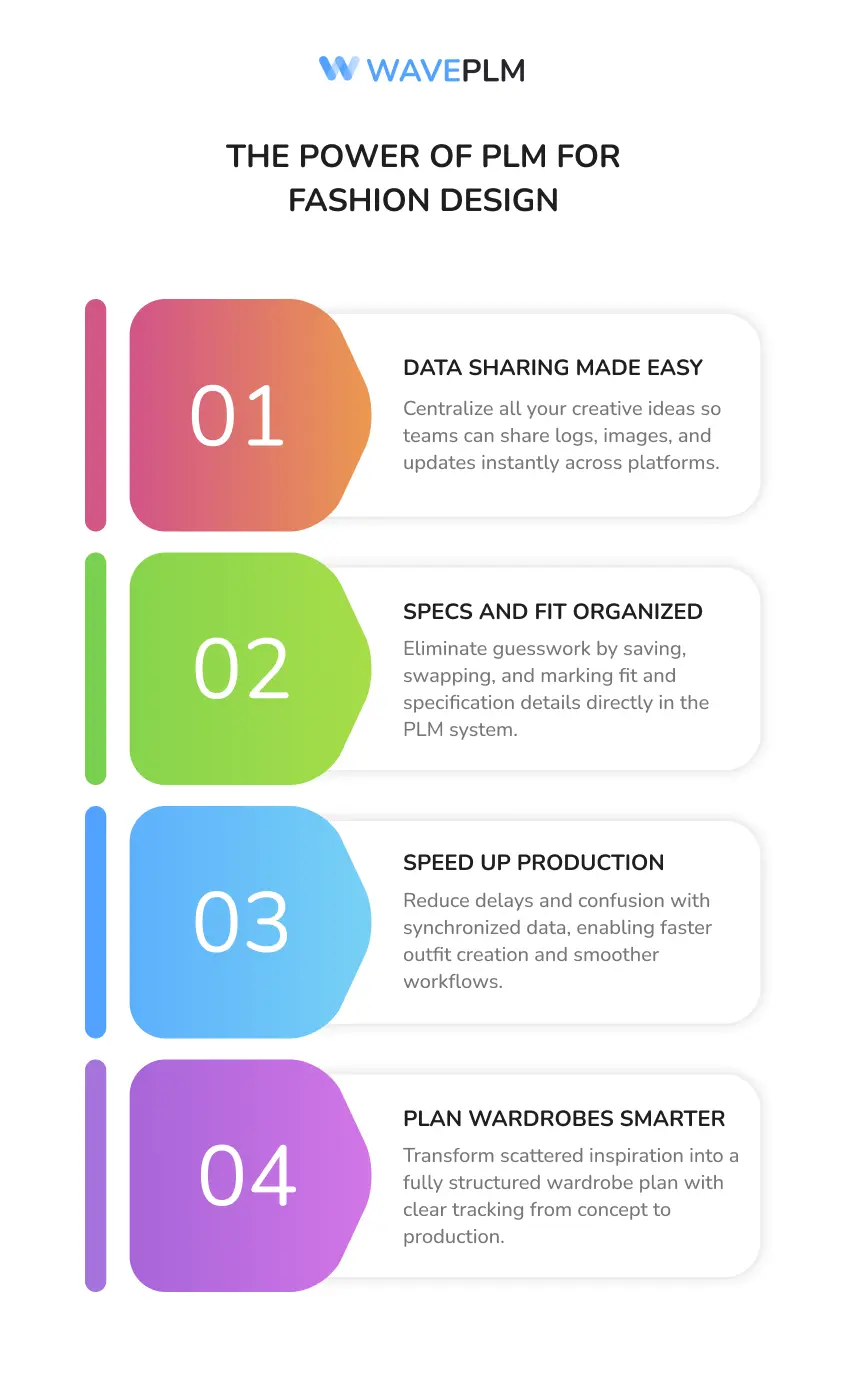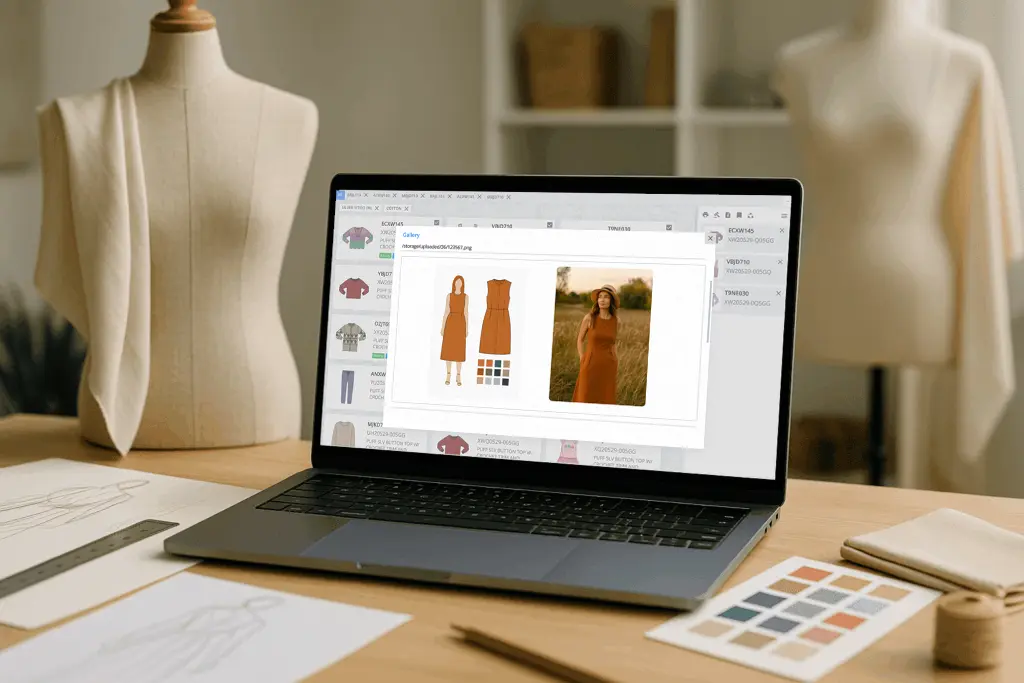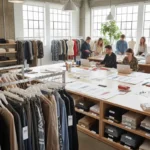
Introduction
Fashion design no longer begins and ends with a sketchbook. Today, designers collect styling inspiration online, save outfit ideas on digital boards, and experiment with clothes inspiration using advanced digital fashion tools. Pinterest, Instagram photos, Facebook posts, AI outfit generators, and virtual design platforms have become the first place where most creative journeys start. These tools provide instant access to images, cool outfit references, and color combination tests that help inspire new collections.
Yet, outfit inspiration alone is not enough to succeed. Without structure, outfit ideas tend to remain scattered across accounts and devices, which creates cost, confusion, and delays. PLM software solves this challenge by centralizing the entire process. Product Lifecycle Management tools connect mood boards, outfit creation steps, and virtual design with sourcing and production. The result is faster time to market, fewer errors, and collections that reflect a complete vision.
This article builds on From Inspiration to Creation: How Outfit Inspiration Shapes Fashion Design with PLM. Here, we go deeper into how styling inspiration and PLM software work together to develop outfits that inspire, fit, and sell across every wardrobe.
Where Outfit Inspiration Starts
Outfit inspiration comes from countless sources, but digital platforms make the process faster and more organized than ever before. Designers save outfit ideas, shop references, and share stories with friends online. They reflect on their own style and enjoy exploring how peers dress for each occasion.
|
Source |
Example Tools |
How They Inspire |
|---|---|---|
|
Social Media |
Instagram, TikTok, Facebook |
Photos of peers, posts with cool new clothes, comment threads |
|
Mood Boards |
Pinterest, Canva |
Organized boards for outfit ideas, styling inspiration, and color combination testing |
|
AI Generators |
AI outfit apps |
Instant outfit creation with unique wardrobe mixes |
|
3D Tools |
CLO 3D, Browzwear |
Virtual design of outfits before sewing |
Designers create, swap, and save ideas quickly. They explore jackets, pairs of shoes, and full outfits for different occasions without wasting fabric. They share photos, collect feedback from friends, and incorporate inspiration into new clothing lines.
From Mood Boards to Wardrobe Creation
Mood boards provide structure to scattered outfit ideas. They act as the best way to collect photos, play with style elements, and reflect on what outfits to wear for any occasion. Designers can use digital boards as a complete visual reference and then transfer everything into PLM software.
Example: Digital Mood Board Workflow
- Save Outfit Ideas: Snap and collect photos from Instagram, Pinterest, or AI outfit apps.
- Sort Clothes Inspiration: Organize images by season, occasion, or style reference point.
- Create Virtual Design: Use 3D tools to preview outfits, jackets, and complete wardrobe looks.
- Sync With PLM Software: Log outfit data, share with peers for comment, and keep account records accurate.
This process helps designers achieve their outfit creation goals, tackle wardrobe planning, and ensure styling inspiration becomes production-ready data. Every log is saved and marked, so no idea is lost.

Why PLM Software Matters
Outfit inspiration without structure often creates hidden cost and delay. A designer may enjoy the creative side of outfit ideas, but sourcing and production need precise details. Without a central hub, ideas swapped across accounts limit collaboration and tend to cause mistakes.
PLM software provides a high chance of success by organizing these details and giving every person access to the same reference page. It connects styling inspiration directly to material specs and outfits ready for manufacturing.
Benefits of Linking Inspiration and PLM
|
Challenge |
Without PLM |
With PLM |
|
Data Sharing |
Ideas scattered in accounts and phones |
Teams share logs and images in real time |
|
Fit & Specs |
Photos without notes or comments |
Specs saved, swapped, and marked in PLM |
|
Speed |
Outfit creation slows due to confusion |
Outfits ready faster with synced data |
|
Wardrobe Planning |
Inspiration sits unused in closets |
Wardrobe develops with clear structure and complete tracking |
By linking styling inspiration with PLM, teams create outfits that fit, achieve design goals, and enjoy a smoother workflow.

Virtual Design and Outfit Creation
Virtual design is one of the coolest advances in fashion. It helps designers create, test, and share outfit ideas before cutting fabric. Styling inspiration becomes virtual outfits that fit digital models instantly. Designers can save costs, reflect on their own style, and show friends early previews.
Advantages
- Save Cost and Time: No need for multiple samples.
- Reduce Waste: New clothes tested digitally instead of wasted fabric.
- Enhance Collaboration: Peers and friends comment on outfit photos and designs.
- Expand Access: Global teams log into the same PLM page for real-time comment and account sharing.
Virtual design proves how outfit inspiration inspires real collections. Teams love the ability to test jackets, pair shoes with dresses, and play with color combinations before production. The process is ready, modern, and effective.
Case Example: From Inspiration to Outfit
Consider a fashion team developing spring outfits:
- They collect styling inspiration from Instagram posts, streetwear photos, and AI outfit creation apps.
- A mood board organizes jackets, wardrobe pairs, and dresses by occasion.
- CLO 3D develops complete outfits, letting designers test fit and style in advance.
- PLM software logs each step, saving fabrics, specs, and outfit ideas for sourcing.
- Production starts faster, ensuring the team stays dressed and ready for every occasion.
This example answers why linking inspiration with PLM provides the best way forward. Clothes inspiration turns into outfits that peers enjoy, customers love, and brands achieve with confidence.

Practical Template for Teams
|
Step |
Tool |
Output |
Saved in PLM? |
|
Collect Outfit Inspiration |
Instagram, Pinterest, Facebook |
Photos, stories, and outfit ideas |
Yes |
|
Build Mood Board |
Canva, Pinterest |
Organized pages with outfits and wardrobe notes |
Yes |
|
Create Virtual Design |
CLO 3D, Browzwear |
Outfit previews, jackets, and color combinations |
Yes |
|
Align With Sourcing |
PLM Software |
Material specs and cost details |
Yes |
|
Launch Wardrobe |
PLM + ERP |
Production data, ready for shops |
Yes |
This template shows the complete process and helps teams reflect on every piece collected during creation.
The Future of Outfit Ideas
Outfit inspiration continues to grow. AI will inspire styling choices, answer questions about fit, and even recommend what to wear for each occasion. Virtual reality may let designers step inside their mood boards, swap outfits in real time, and save new clothing pieces straight to a digital closet.
PLM software will incorporate these tools, ensuring outfit creation remains modern, structured, and complete. The fashion industry will love how these systems connect inspiration, wardrobe, and production with no wasted steps.
Conclusion
Outfit inspiration today flows through photos, social media pages, AI generators, and digital design tools. Wardrobe planning, cool jackets, styling inspiration, and clothes inspiration no longer stop at sketches or scattered images. With PLM software, designers reflect their own style, share ideas, and create outfits that inspire confidence.
This is the best way to enjoy fashion, achieve complete collections, and stay dressed for every occasion. Brands that connect outfit inspiration with PLM not only tackle design challenges but also develop collections that peers admire and customers love to wear.





Leave a Reply